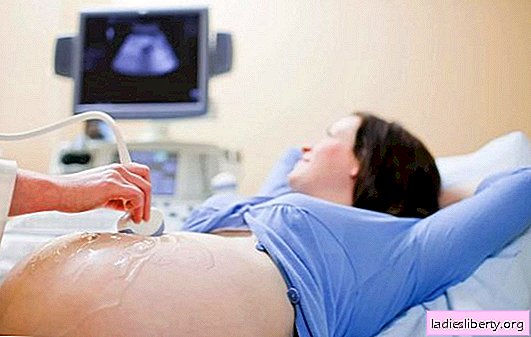
Why is ovarian inflammation so often in women and what to do?
Ovarian inflammation in women is a pathological process of an infectious and inflammatory nature.
Isolated ovarian inflammation is extremely rare. Like any inflammatory process in any organ, ovarian inflammation in women can occur in acute, subacute, chronic forms. Any of them has its own pathogenesis (development of the disease), its own symptoms, and, accordingly, certain treatment methods.
Ovarian inflammation in women - ovarian function in the body
To understand the process that occurs in the ovaries, it must be remembered that the ovaries are closely connected anatomically and functionally with the fallopian tubes, and those, in turn, with the uterus.
The ovaries are responsible for the reproductive function in the body: an egg is formed and matures in them, which through the fallopian tubes enters the uterine cavity, attaches to the uterine wall and continues its development.
In this case, pregnancy occurs. In addition, the ovaries produce important hormones: progesterone and estrogens.
These are female sex hormones.
They are responsible for the formation of the female genital area, for all processes occurring in the genital area: menstruation, pregnancy, gestation.
Ovarian inflammation in women - how the ovaries are arranged
What else you need to know about the ovaries in order to understand the essence of the processes that occur in them.
The ovaries are paired organs. They are reliably protected from above by a protein shell. Thanks to her, they are rarely independently exposed to infections. This usually occurs as a result of the passage of the infectious agent from the fallopian tubes or other nearby organs. That is, salpingoophoritis is more common - it is an inflammation of the ovaries and fallopian tubes.
Infection can go to the right ovary with an inflamed appendix (with appendicitis), to the left - with sigmoiditis or proctitis (intestinal inflammation). This is due to the anatomical proximity of the ovaries to these segments of the intestine.
Another option is the transfer of infection from an inflamed omentum to the ovaries.
Ovarian inflammation in women - ways of infection
If infection occurs through the fallopian tubes, this is the ascending path of infection. With salpingitis (inflammation of the fallopian tubes), the infection enters the tubes from the vagina through the cervix and uterus, or from the cervix, or from the uterus itself.
Rarely, but still there is a downward path of infection: through the blood vessels. With blood, an infectious agent is transferred with tonsillitis, pyelonephritis. These are foci of chronic infection, which, if not cured on time, will be a constant source of pathogenic microbes in the body.
In addition, given the structure of the genitals and ovaries in particular (several protective membranes, which normally are a reliable barrier against various microorganisms), it becomes clear that the pathogen of one species cannot immediately lead to inflammation of the ovaries in women. This should be a mixed infection, or an association of microbes (several microorganisms of different types), and the presence of certain reasons for its occurrence.
Ovarian inflammation in women - causes
There can be many reasons, and they are different. The causative agents that ultimately cause ovarian inflammation in women include opportunistic microflora (microorganisms that cause infection under certain conditions) and pathogenic (which leads to the disease always, regardless of any conditions, due to its high morbidity).
Conditionally pathogenic include: staphylococci, streptococci, protea, fungi, etc.
To pathogens: gonococci, spirochetes, chlamydia, viruses, mycoplasmas, trichomonads, etc.
But the mere presence of harmful microorganisms, regardless of their number and type, is not enough for the occurrence of ovarian inflammation in women. If a person is healthy, the body itself fights the infection. In order for the disease to occur, it is necessary to have several reasons at the same time.
1. Weakened body. The disease can develop against a background of reduced immunity after some recently transmitted infections, or are currently tolerated. These can be sluggish chronic diseases that are not diagnosed if a woman carries them on her legs and does not seek medical help (for example, chronic endometritis).
2. Violation of the integrity of the mucous membranes of the genital tractwhich is the gateway to infection. This can happen with various surgical procedures, during menstruation. Infection can also occur through surgical instruments.
3. The spiral in the uterus. It is a foreign traumatic body in case of improper selection or installation.
4. Constant stress, lack of good rest. This also reduces the body's resistance to pathogenic factors.
5. Sudden changes in temperature, hypothermia, hot climate - that is, conditions that are different from the usual.
All these reasons lead to the fact that if there is an inflammatory process in the uterus, it goes to the fallopian tubes, which in a healthy woman are sterile, and from there to the ovaries.
There are physiological causes of ovarian inflammation in women. This is pregnancy and menstruation. During pregnancy, the hormonal background is disturbed and immunity is reduced. During menstruation, at a certain stage, the inner layer of the uterine epithelium is rejected, the wound surface with gaping vessels remains, which is the entrance gate for any microflora.
Isolated ovarian inflammation in women is rare, because the outer strong shell reliably protects the ovary from any influences. But under the influence of the above reasons, during ovulation (maturation of the egg and its separation from the ovary), a natural microtrauma occurs on the surface of the ovary, through which infection can occur.
Ovarian inflammation in women - symptoms of acute inflammation
Symptoms of ovarian inflammation in women depend on the form of the disease.
In the acute form, the clinic appears brightly and there are many symptoms. In this case, there are practically no difficulties in diagnosis. An acute onset with a high temperature (up to 400), chills, intense pain of different localization, with copious discharge of various, mainly purulent character. The pains are localized depending on the damage to the ovaries. Ovarian inflammation in women can be bilateral and on the one hand. If both ovaries are involved in the process, the pains are disturbing in the inguinal region, strong, acute, accompanied by general symptoms of intoxication: temperature, there may be chills, general malaise, headaches, weakness.
With a unilateral lesion, pain appears from the side of inflammation, can be given to the lower back, and to the rectum. In this case, the defecation process may be disturbed. Depending on which side the pathological process develops, it is necessary to differentiate with appendicitis (on the right) or with renal colic. Inflammation of the ovaries can affect the organs of urination, and then the urination process itself is disrupted. If the uterus is involved in the inflammatory process, the pains are intense in the lower abdomen, without clear localization and irradiation. That is, in symptoms it resembles acute surgical pathology and requires urgent hospitalization in a hospital.
Ovarian inflammation in women - symptoms of chronic inflammation
A completely different clinical picture and symptoms are observed with chronic ovarian inflammation in women. Chronic inflammation of the ovaries is the outcome of acute - with untimely treatment by a specialist, or self-medication, or inadequate treatment. This is a serious disease, exhausting, lasting for years, periodically exacerbating or passing into the subacute stage, which has many serious consequences. It develops about six months after acute ovarian inflammation in women
Symptoms of chronic inflammation may not exist at all, or the clinical picture is so erased that the disease may not manifest itself.
If there are symptoms, then you can not pay attention to them. These are vague pulling pains or some kind of discomfort in the lower abdomen without irradiation, absence or insignificant amount of mucous secretions, general malaise, weakness, constant fatigue, irritability, lethargy. The temperature does not rise. In a general clinical blood test, unlike acute inflammation of the ovaries, there are no changes. (In acute inflammation of the ovaries in women in the blood test, there are vivid signs of inflammation: leukocytosis, increased ESR). All this is due to an adhesion process in the pelvis or in the abdominal cavity after acute inflammation of the ovaries.
A variety of menstrual irregularities, pain or severe discomfort after intercourse, deterioration of well-being after it, anorgasmia, infertility will make you alert and finally turn to a specialist.
Diagnosis of acute ovarian inflammation in women
As already mentioned, with acute inflammation, the diagnosis is not particularly difficult. Poll; gynecological examination (sharp pain and an increase in the inflamed ovary or both at once); soreness of the anterior abdominal wall; inflammatory changes in the general clinical blood test (increased red blood cell count, increased ESR - but these are nonspecific manifestations); results of microscopy and bacterial seeding; results of ultrasound (ultrasound examination of the uterus with appendages): ovarian enlargement, possibly the presence of fluid in the posterior fornix, pyosalpinx (purulent change in the fallopian tubes) or hydrosalpinx (fluid accumulation in the tube).
Diagnosis of chronic ovarian inflammation in women
In contrast to acute ovarian inflammation in women, the diagnosis of chronic inflammation is complicated by the absence or erasure of symptoms. Perhaps this is due to a later visit to a doctor. In the diagnosis, as well as in the clinical manifestations of chronic ovarian inflammation in women, no specific signs can be detected.
In a general clinical blood test, there may be no change.
At the gynecological examination too, there may not be any specific signs. Only with a very careful examination can you find a restriction of the mobility of the uterus with appendages.
Ultrasound of the uterus with appendages determine the increase in ovaries, changes in their structure, changes in the fallopian tubes, if any (hydrosalpinx, pyosalpinx).
The most accurate and reliable method of examination is ovarian laparoscopy. A laparoscope is inserted through a small incision in the anterior abdominal wall, and the doctor can see directly through the eyepiece the changed organs (color, gloss, surface, their shape).
Since chronic ovarian inflammation in women is most often detected in connection with the problem of infertility, determining the patency of the fallopian tubes plays an important role in the diagnosis. Indigo carmine is used - a special dye that is introduced through the uterine cavity, and by its exit from the fallopian tubes it is possible to judge their patency. In the same way, medicinal substances are introduced for the purpose of treatment.
Ovarian inflammation in women - treatment
Treatment of ovarian inflammation in women is a complex and very lengthy process. It is assigned individually, depending on the sown flora, is extremely long and painstaking and takes place in several stages.
The presence of acute ovarian inflammation in women requires immediate hospitalization and treatment in a hospital setting. Diagnosis is carried out, bacteriological tests to identify the pathogen and antibiotic, to which this type of microbe reacts. Despite the fact that the response of bacteriological culture and the sensitivity of flora to a certain antibiotic takes time (5-6 days), antibiotic therapy is prescribed immediately from the first hours of admission to the hospital. Depending on the severity of the condition, clinical manifestations, it is possible to prescribe simultaneously two antibiotics of different groups. In the future, upon receipt of an answer about the type of pathogen and its sensitivity, and in the absence of a reaction to the antibiotic, it changes in accordance with the detected sensitivity. Or it continues to be taken further if within three days an effect has appeared: lowering the temperature, reducing pain, improving the general condition.
Penicillin, tetracycline antibiotics, cephalosporins, macrolides are used. The specific drug, its dosage, duration of administration and route of administration (intramuscularly or intravenously, and possibly drip) is determined by the doctor, taking into account all the causes, symptoms of ovarian inflammation in women and the severity of the condition.
In addition to mandatory antibiotic therapy, painkillers and anti-inflammatory drugs are prescribed.
Symptomatic therapy is also required. It is carried out in parallel and includes antihistamines (since in any inflammatory process, inflammatory mediators are released, among which histamine takes the first place), immunostimulants, if necessary, antiviral, antifungal drugs, biogenic stimulants, lactobacilli-based drugs for intestinal dysbiosis, which necessarily occurs in antibiotic treatment process.
Widely used and local treatment in the form of suppositories, creams. It enhances the effect of the main treatment for ovarian inflammation in women.
Physiotherapeutic methods are also widely used in the treatment of ovarian inflammation in women. But they are appointed at the stage of rehabilitation, to consolidate the results of treatment.
In the treatment of chronic ovarian inflammation in women, antibiotics are not used.
It is important to remember that conservative treatments do not always produce results. In severe cases and with late treatment, it is necessary to resort to surgical methods. This happens if pyosalpinx, hydrosalpinx, ovarian masses, serious adhesions, and drug therapy failures are detected.
With any inflammation of the genital organs, in no case should you self-medicate and take antibiotics or, moreover, traditional medicine, uncontrollably. As a result of these actions, clear signs of inflammation will fade, but a chronic process may occur. In the future, this will lead to serious complications, which may have to be fought for many years in a row.
Statistics show that every fifth woman after suffering ovarian inflammation suffers from infertility. And in 6%, women who have had ovarian inflammation develop purulent inflammations that require surgical intervention.











